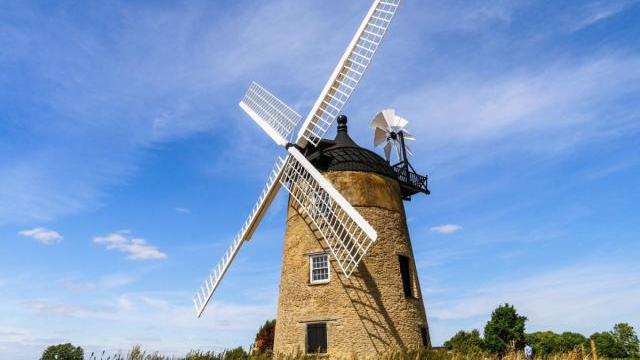A windmill is a structure that converts wind power into rotational energy by means of vanes called sails or blades, specifically to mill grain (gristmills), but the term is also extended to windpumps, wind turbines and other applications.
The first practical windmills were panemone windmills, using sails that rotated in a horizontal plane, around a vertical axis. Made of six to 12 sails covered in reed matting or cloth material, these windmills were used to grind grain or draw up water. These windmills are recorded by Persian geographer Estakhri in the 9th century as being operated in Khorasan (Eastern Iran and Western Afghanistan).
The authenticity of an earlier anecdote of a windmill involving the 7th-century caliph Umar (634–644) is questioned on the grounds that it is recorded only in the 10th century. Such windmills were in widespread use across the Middle East and Central Asia, and later spread to Europe, China and India from there. By the 11th century, the vertical-axle windmill had reached parts of Southern Europe, including the Iberian Peninsula (via Al-Andalus) and the Aegean Sea (in the Balkans).
A similar type of horizontal windmill with rectangular blades, used for irrigation, can also be found in thirteenth-century China (during the Jurchen Jin dynasty in the north), introduced by the travels of Yelü Chucai to Turkestan in 1219.
Vertical-axle windmills were built, in small numbers, in Europe during the 18th and nineteenth centuries, for example Fowler's Mill at Battersea in London, and Hooper's Mill at Margate in Kent. These early modern examples seem not to have been directly influenced by the vertical-axle windmills of the medieval period, but to have been independent inventions by 18th-century engineers.
The horizontal-axis or vertical windmill (so called due to the plane of the movement of its sails) is a development of the 12th century, first used in northwestern Europe, in the triangle of northern France, eastern England and Flanders. It is unclear whether the vertical windmill was influenced by the introduction of the horizontal windmill to Southern Europe in the preceding century.

